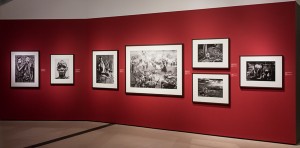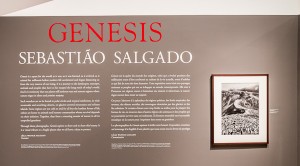Sebastião Salgado’s work truly exemplifies the power of photography and even more importantly, the impact that a photographer and his photographs can have on the world. This is a bold and maybe over-the-top statement, but if you know his work and if you have followed his lengthy projects over the last four decades, I’m sure you will agree. If you’re not familiar with his work, add him to your list of photographers to learn more about. His photographs are amazing, but also beautiful. He is a photojournalist. He is a landscape photographer. He is a portrait photographer. But none of these labels fully describe Salgado, the photographer. There is always a deeper sense of meaning that compels the viewer to want to know more and to see more. After seeing his photographs the viewer will have a better understanding of the world we live in.
The multi-year projects that Salgado has embarked on have told more than a story. He has tackled some of the most important issues that go beyond national borders – Workers: An Archaeology of the Industrial Age (1986-1992) showed with amazing clarity, the struggle of manual labor throughout the world. Migrations (1993-2000) presented photographs from 39 countries and brought awareness to the majority of us who were only remotely familiar with impact that war, relocation, repression and poverty have on humankind. His latest multi-year project, Genesis (2004-2011), is both a major exhibit and a book. Unfortunately, for those of us in the U.S., for the foreseeable future we will have to travel to see the exhibit – either to London, Toronto, Rome, Rio de Janeiro, Lausanne, Sao Paulo or Paris. 
Last week I had the privilege to see Salgado’s Genesis exhibit at the Royal Ontario Museum (ROM) in Toronto. Salgado’s photographs are spellbinding. The exhibit is so enormous – 245 photographs, many of which are quite large – that it couldn’t be displayed on just one floor of the ROM. It occupies very large spaces on two floors of the museum. I will not even try to describe the exhibit because it must be seen. But once you’ve seen Genesis, it is unlikely that you will view the world around us in the same way. In Genesis, Salgado demonstrates his amazing ability to present the beauty of the natural world and at the same time to include the inhabitants, both human and wild creatures, and the impact each is having on the other and on our environment.
If you have the opportunity to see Genesis, RUN, do not walk to see this exhibit! You will witness the power of photography from a world-class photographer. If you’re not able to see the exhibit, the next best thing is to buy the book, which can be ordered HERE.
Sebastãio Salgado’s recent TED Talk will help provide perspective on the man and his photography.



Your presentation at the NIH Camera Club last night was excellent and unique. I enjoyed our conversation afterwards. The video about Sebastiao Salgado is impressive and I just placed an order for his book “Genesis.” As I child I lived some years in Brazil and since have visited several times photographing parts of this wonderful country. I look forward to seeing your fine work at the Torpedo Factory.